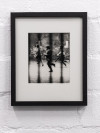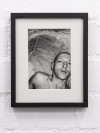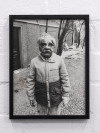
Installation view, Jürgen Baldiga, Wie die Hölle, so die Erde. Wo die Hölle, da die Erde., Schwules Museum Berlin – Courtesy Aron Neubert. Photo: Fred Dott.

Installation view, Jürgen Baldiga, Wie die Hölle, so die Erde. Wo die Hölle, da die Erde., Schwules Museum Berlin – Courtesy Aron Neubert. Photo: Fred Dott.

Installation view, Jürgen Baldiga, Wie die Hölle, so die Erde. Wo die Hölle, da die Erde., Schwules Museum Berlin – Courtesy Aron Neubert. Photo: Fred Dott.

Installation view, Jürgen Baldiga, Wie die Hölle, so die Erde. Wo die Hölle, da die Erde., Schwules Museum Berlin – Courtesy Aron Neubert. Photo: Fred Dott.

Installation view, Jürgen Baldiga, Wie die Hölle, so die Erde. Wo die Hölle, da die Erde., Schwules Museum Berlin – Courtesy Aron Neubert. Photo: Fred Dott.

Installation view, Jürgen Baldiga, Wie die Hölle, so die Erde. Wo die Hölle, da die Erde., Schwules Museum Berlin – Courtesy Aron Neubert. Photo: Fred Dott.

Installation view, Jürgen Baldiga, Wie die Hölle, so die Erde. Wo die Hölle, da die Erde., Schwules Museum Berlin – Courtesy Aron Neubert. Photo: Fred Dott.

Installation view, Jürgen Baldiga, Wie die Hölle, so die Erde. Wo die Hölle, da die Erde., Schwules Museum Berlin – Courtesy Aron Neubert. Photo: Fred Dott.

Jürgen Baldiga, Mann vor der Gedächtniskirche, 1985, Schwules Museum Berlin – Courtesy Aron Neubert. Photo: Fred Dott.

Jürgen Baldiga, Krieg spielende Kinder, 1985/86, Schwules Museum Berlin – Courtesy Aron Neubert. Photo: Fred Dott.

Jürgen Baldiga, Mann mit Netzschleier, 1985/86, Schwules Museum Berlin – Courtesy Aron Neubert. Photo: Fred Dott.

Jürgen Baldiga, Selbstportrait (nach dem Sex), 1991, Schwules Museum Berlin – Courtesy Aron Neubert. Photo: Fred Dott.

Jürgen Baldiga, Polette (Scheißfick), 1988, Schwules Museum Berlin – Leihgabe Courtesy Aron Neubert. Photo: Fred Dott.

Jürgen Baldiga, Paula, Erika und Fremder (auf der Bank), 1988, Schwules Museum Berlin – Courtesy Aron Neubert. Photo: Fred Dott.

Jürgen Baldiga, Selbstportrait (Jürgen als Praktica mit Renate Wanda de la Gosse), 1988, Schwules Museum Berlin – Courtesy Aron Neubert. Photo: Fred Dott.

Jürgen Baldiga, Kind mit Maske, 1985/86, Schwules Museum Berlin – Courtesy Aron Neubert. Photo: Fred Dott.

Jürgen Baldiga, Eros / Hoden, 1985/86, Schwules Museum Berlin – Courtesy Aron Neubert. Photo: Fred Dott.

Jürgen Baldiga, Kind an der Leine / Selbstportrait (mit Pfleger), um 1985;1991, Schwules Museum Berlin – Courtesy Aron Neubert. Photo: Fred Dott.

Installation view, Jürgen Baldiga, Wie die Hölle, so die Erde. Wo die Hölle, da die Erde., Schwules Museum Berlin – Courtesy Aron Neubert. Photo: Fred Dott.

Installation view, Jürgen Baldiga, Wie die Hölle, so die Erde. Wo die Hölle, da die Erde., Schwules Museum Berlin – Courtesy Aron Neubert. Photo: Fred Dott.

Jürgen Baldiga, Souvenir, 1992, Schwules Museum Berlin – Courtesy Aron Neubert. Photo: Fred Dott.

Jürgen Baldiga, Souvenir, 1992, Schwules Museum Berlin – Courtesy Aron Neubert. Photo: Fred Dott.

Installation view, Jürgen Baldiga, Wie die Hölle, so die Erde. Wo die Hölle, da die Erde., Schwules Museum Berlin – Courtesy Aron Neubert. Photo: Fred Dott.

Installation view, Jürgen Baldiga, Wie die Hölle, so die Erde. Wo die Hölle, da die Erde., Schwules Museum Berlin – Courtesy Aron Neubert. Photo: Fred Dott.

Installation view, Jürgen Baldiga, Wie die Hölle, so die Erde. Wo die Hölle, da die Erde., Schwules Museum Berlin – Courtesy Aron Neubert. Photo: Fred Dott.

Installation view, Jürgen Baldiga, Wie die Hölle, so die Erde. Wo die Hölle, da die Erde., Schwules Museum Berlin – Courtesy Aron Neubert. Photo: Fred Dott.

Installation view, Jürgen Baldiga, Wie die Hölle, so die Erde. Wo die Hölle, da die Erde., Schwules Museum Berlin – Courtesy Aron Neubert. Photo: Fred Dott.

Installation view, Jürgen Baldiga, Wie die Hölle, so die Erde. Wo die Hölle, da die Erde., Schwules Museum Berlin – Courtesy Aron Neubert. Photo: Fred Dott.

Jürgen Baldiga, Souvenir, 1992. Schwules Museum Berlin – Courtesy Aron Neubert. Photo: Fred Dott.

Installation view, Jürgen Baldiga, Wie die Hölle, so die Erde. Wo die Hölle, da die Erde., Schwules Museum Berlin – Courtesy Aron Neubert. Photo: Fred Dott.

Installation view, Jürgen Baldiga, Wie die Hölle, so die Erde. Wo die Hölle, da die Erde., Schwules Museum Berlin – Courtesy Aron Neubert. Photo: Fred Dott.

Installation view, Jürgen Baldiga, Wie die Hölle, so die Erde. Wo die Hölle, da die Erde., Schwules Museum Berlin – Courtesy Aron Neubert. Photo: Fred Dott.

Installation view, Jürgen Baldiga, Wie die Hölle, so die Erde. Wo die Hölle, da die Erde., Schwules Museum Berlin – Courtesy Aron Neubert. Photo: Fred Dott.

Installation view, Jürgen Baldiga, Wie die Hölle, so die Erde. Wo die Hölle, da die Erde., Schwules Museum Berlin – Courtesy Aron Neubert. Photo: Fred Dott.
Jürgen Baldiga
Wie die Hölle, so die Erde. Wo die Hölle, da die Erde.
Jürgen Baldiga (*1959 in Essen, †1993 in Berlin) was not only a photographer, a chronicler of his time—the West Berlin gay, and “Tunten” scene during the AIDS crisis in the 1980s. He was also a poet, activist, and “cook / bartender / lover / prostitute / casual worker,”[1] as he described himself in a diary entry.
His amateurish use of a reflex camera stemmed less from an ambition to become an aspiring photographic artist than from his decision in 1985, a year after his HIV diagnosis, to spend eight years depicting what would soon be gone. In Baldiga's words, “Since 1989 full (clinical) picture, or rather: never put off till tomorrow what you can do today.”[2]
At the Halle für Kunst, Jürgen Baldiga's artistic and activist life practice, is being retraced in collaboration with the estate manager and artist Aron Neubert in a retrospective exhibition of his work, which the curator Frank Wagner once described as “radically realistic, without claiming to be authentic.”[3]
For the first time, the never shown sculptural works and excerpts from Baldiga's total of 40 diaries, which he kept from the late 1970s until his death, are presented here together with black-and-white photographs. The photographs reflect on Baldiga's niche sociotopes—first and foremost that of the “SchwuZ-Tunten,”[4] and partly derive from two folders covered with red/blue plush fur. Baldiga here had collected his photographs in cheap plastic sheets and arranged them into dialectical pairs, in his own vision of a family.
Many of Baldiga's works conserve the burning desire to live while documenting the loss of a "culture of possibility" during a time of inhumane AIDS policies directed at those on the margins of society: queer people, people with substance use disorder, sex and immigrant workers, unhoused people, or just outcasts who were perceived as a risk to the "heterosexual public health" in the Federal Republic of Germany at the time. One might think here of Douglas Crimp's "list" of reclaimed, lost spaces, actions, and ideals of a queer lifeworld, which during the AIDS crisis came with the toll of death and were disparaged as abject.[5]
Baldiga theatricalized many of his paintings into a supposed ode to polyamorous plots, to the sublimity of youthful beauty, to ancient pederasty fantasies, as well as to sheer potency, which emerged almost as a parody of his Catholic influence. He staged the portrayed subjects as self-exposers in the manner of the baroque martyr paintings of a Caravaggio: as Greek angelic and divine figures, but without a heroic patina sticking to them.
Baldiga preferred to shamelessly expose their crumbling facades, their literal muscular atrophy. The staged, often overdrawn poses in black and white, and makeshift objects in "camp" aesthetics became for Baldiga instruments and bearers of the macabre, of irony, which broke with stereotypes of those who were socially banished from imagined futures. This could be an AIDS patient, the unhoused person or the “Tunte” with wig and trinket and dressed in drag on the street, for whom camp as “bad taste” and “private code” became a survival strategy.[6]
In this vision of Baldiga's community, it was no longer a matter of 'misfits' of the underworld, as Tom Kuppinger noted, since “with dignified indifference and self-evidence, this hermetic family world has long since left the conflict over otherness behind.”[7] Instead of clinging to loss, Baldiga's dispossessed egos, brimming with sexual utopia in his works, to this day defy the waning of their community, while it has been lost, was simultaneously created—by Baldiga's portrayal of them as “mortal” beings, thus making them immortal in the first place: “As is hell, so is the earth. Where there is hell, there is earth.”
- Jürgen Baldiga, diary entry, no date.
Text: Elisa R. Linn
The exhibition contains material that is suitable for visitors aged 18 and over due to the depiction of nudity and explicit sexual acts. If you have any questions, please do not hesitate to contact our team.
December 1, 2023, 8 pm: Screening at Filmclub der polnischen Versager*innen
In cooperation with Halle für Kunst, a screening of Jasco Viefhues' documentary Rettet das Feuer (2019) will take place on World-AIDS-Day at Filmclub der polnischen Versager*innen. The director Jasco Viefhues and Aron Neubert will be present.
Filmclub der polnischen Versager*innen was founded by Elisa R. Linn, Tiphanie Kim Mall and Flora Klein at the Club der polnischen Versager in 2021. On select evenings they screen selected experimental films and run a bar. The Club der polnischen Versager was founded in the 1990s by Polish artists living in Berlin and along with Schokoladen, is one of the last activist-run living, working and cultural spaces in Berlin-Mitte.
Curated by Elisa R. Linn in collaboration with Aron Neubert
_________________
[1] Jürgen Baldiga, diary entry, August 2, 1992.
[2] Jürgen Baldiga, diary entry, July 16, 1992.
[3] See video message from Jasco Viefhues, https://www.sissymag.de/videobotschaft-von-jasco-viefhues-rettet-das-feuer/.
[4] SchwuZ was founded in 1977 and is Germany's oldest queer club as well as the largest cultural institution in the queer field, https://www.schwuz.de/
[5] See José Esteban Muñoz, Cruising Utopia: The Then and There of Queer Futurity (New York: NYU Press, 2009); and Douglas Crimp, “Mourning and Militancy,” in: October, no. 51 (1989): 11.
[6] See Chris Pilpot: “Diva Worship as a Queer Poetics of Waste in D. Gilson’s Brit Lit,” in: Sontag and the Camp Aesthetic. Advancing New Perspectives, ed. Bruce E Drushel and Brian M Peters (Lanham: Lexington Books, 2017), 64.
[7] Tom Kuppinger, “AIDS macht 90 bis 95% meines Lebens aus,”, in: Jürgen Baldiga – Fotografien, exhibition catalog, 1997.
The annual program and the exhibition at Halle für Kunst Lüneburg e.V. is funded by the Ministry for Science and Culture of Lower Saxony, the Sparkassenstiftung Lüneburg, Lüneburgischer Landschaftsverband, and Hansestadt Lüneburg. The educational program at Halle für Kunst Lüneburg e.V. is funded by the Ministry for Science and Culture of Lower Saxony. The exhibition is funded by Sparkassenstiftung Lüneburg, Between Bridges and Hannchen-Mehrzweck-Stiftung (https://www.hms-stiftung.de/) and is supported by Schwules Museum Berlin.

Jürgen Baldiga was born in Essen on October 27, 1959, and grew up in the Ruhr region as the son of a coal miner and a housewife. In 1979 he moved to West Berlin, where he worked and lived as a barman, chef, sex worker and freelance artist. After a brief foray as a singer in the punk new wave band Pionier Seriös and the publication of his poetry collection Breitseite: Gedichte und Fotocollagen (1980), he turned to photography beginning in 1983. Without any artistic training, he began taking photographs as an autodidact after his HIV diagnosis and developed a life and survival strategy that left behind the norm of mere journalistic documentation of the AIDS disease. Within a few years, he created a considerable photographic oeuvre of black-and-white photographs and published several volumes of photographs during his lifetime, including Bambule. Photoportraits (1986), Jünglinge. Photographien (1987) and Tunten/Queens/Tantes. Ein Männerfotobuch (1988), which in various ways shed light on and document his living environment. Baldiga was part of the “Tunten” ensemble Ladies Neid, along with Melitta Sundström (1964-1993), Pepsi Boston (1962-1993), Polette (†1989), and others. Exhausted by illness, Baldiga took his own life in December 1993. In 1995, the portrait series Wärme, die nur Feuer uns geben kann, was published by Aron Neubert, in which he portrayed the last 27 months of Baldiga's life in 27 photographs. In 1997, after Baldiga's death, the first retrospective exhibition of his photographic works took place at Künstlerhaus Bethanien. In 2013, on the 20th anniversary of his death, his “Tunten” photos were published on the cover of Siegessäule magazine. In 2019, the documentary film Rettet das Feuer by Jasco Viefhues had it’s premiere. In 2021, selected black and white photographs were presented in the exhibition Hover at Cordova in Barcelona.